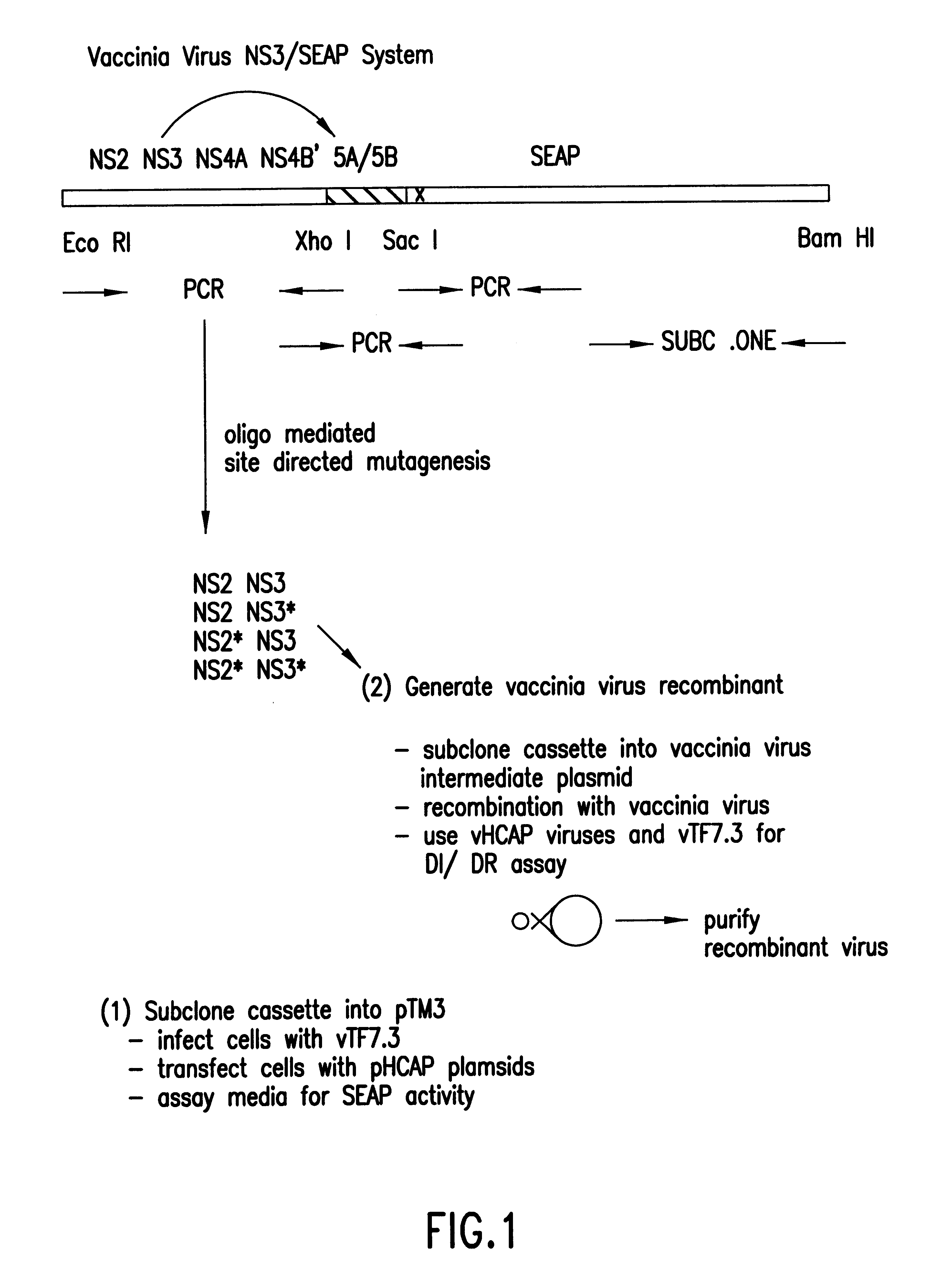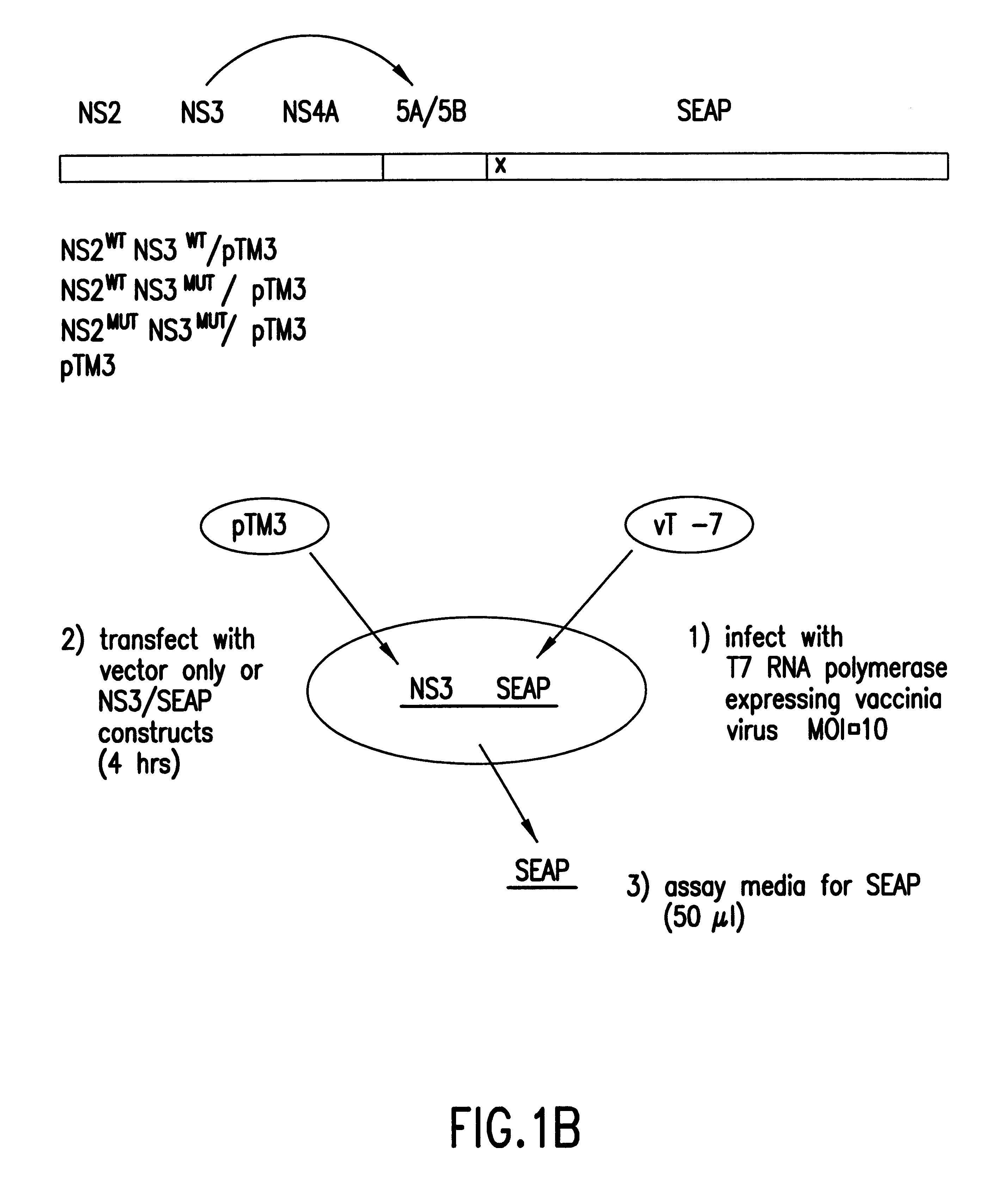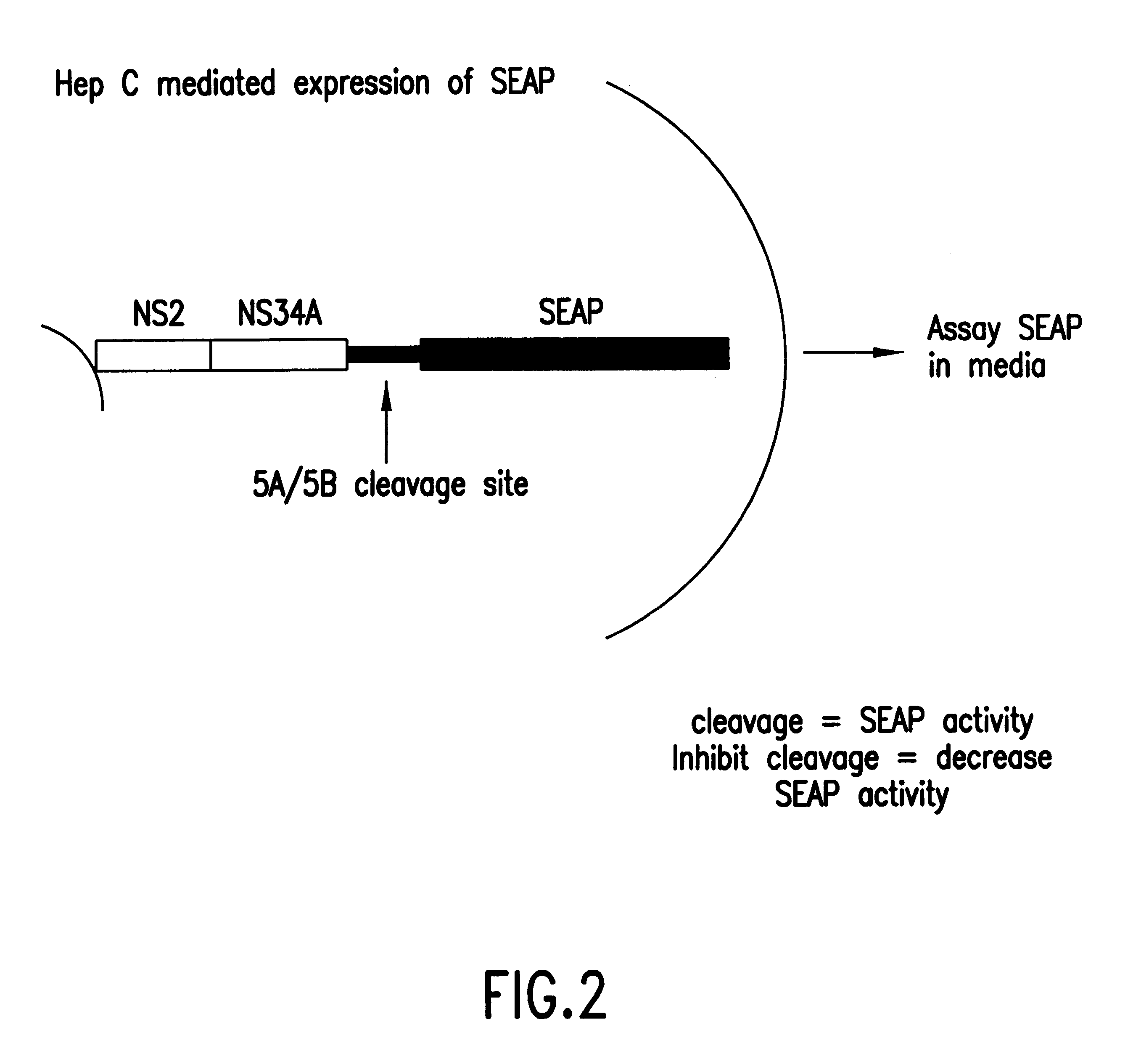Reporter gene system for use in cell-based assessment of inhibitors of the Hepatitis C virus protease
a reporter gene and protease technology, applied in the field of reporter gene system for cell-based assessment of inhibitors of the hepatitis c virus protease, can solve the problems of hepatocellular carcinoma, hepatocellular carcinoma, and no specific antiviral agent available for the treatment of hcv infection, and achieves improved sensitivity, reduced intra- and inter-assay variability, and convenient operation
- Summary
- Abstract
- Description
- Claims
- Application Information
AI Technical Summary
Benefits of technology
Problems solved by technology
Method used
Image
Examples
first embodiment
In the first embodiment, the Tropix.RTM. pCMV / SEAP expression vector is used as a starting point for construction of the HCV NS3 protease plasmid construct pHCAP1 (Seq. ID. NOS. 1-7). pHCAP1 is constructed from the pTM3 vector (Moss et al., Nature, 348:91-92 (1990)) in which the nucleotide sequence encoding the portion of the HCV-BK polyprotein domains NS2-NS3-NS4A-NS4B was cloned from the pBKCMV / NS2-NS3-NS4A-NS4B-SEAP (the pBK / HCAP) construct. pBK / HCAP is the eukaryotic expression plasmid in which all the original subcloning and ligation of all the HCV NS gene fragments and SEAP gene was created pCMV / SEAP is a mammalian expression vector designed for studies of promoter / enhancer elements with SEAP as a reporter (Berger et al., (1988)). The vector contains a polylinker for promoter / enhancer insertion, as well as an intron and polyadenylation signals from SV40. The vector can be propagated in E.coli due to the pUC19 derived origin of replication and ampicillin resistance gene. Modifi...
example 1
Protocol for vTF7.3 infection / HCV / SEAP Plasmid Transfection Experiment
Day 1
Flat-bottom 96 well plates were seeded with BHK cells at a density of 1.times.10.sup.4 cells / well (equivalent to about 85% confluence) after 24 hours. In general, one 96 well plate was used for investigation of each compound of interest (protease inhibitor), plus an additional plate at the same cell density is used where two rows are designated for each compound of interest at increasing concentrations for investigating the cytotoxicity of the compounds themselves in cells alone. Cytotoxicity was determined by XTT assay (Sigma 4626).
Day 2
The established monolayer was transfected with either pHCAP1, pHCAP3, pHCAP4, or pTM3 plasmids at a concentration of 0.4 .mu.g / well as part of a DNA Lipofectamine (Gibco BRL) transfection mixture. Infections of the established monolayer with vTF7.3 preceded the transfection step. A working stock of vTF7.3 was diluted to a multiplicity of infection (MOI) of 10 with Optimem. Th...
examples 1 and 2
For
XTT Cytotoxicity Assay
XTT (Sigma 4626) was dissolved in phosphate buffered saline (PBS) to a final concentration of 1 mg / mL. 5 mL was prepared per plate. To this solution was added 5 mM PMS (n-methyidibenzopyrazine methyl sulfate salt) (Sigma P9625) to a final concentration of 20 .mu.M. 50 .mu.L of the XTT solution was added per well to the plate set up for cytotoxicity. The plates were incubated at 37 C in a 5% CO2 incubator for about 3.5 hours and then the color change was quantitated by reading absorbance in a Vmax plate reader (Molecular Devices) at 450 nm / 650 nm. Values were corrected by subtracting media-only background and presented as %viable with the untreated cell control representing 100%.
PUM
| Property | Measurement | Unit |
|---|---|---|
| Time | aaaaa | aaaaa |
| Concentration | aaaaa | aaaaa |
Abstract
Description
Claims
Application Information
 Login to View More
Login to View More - R&D
- Intellectual Property
- Life Sciences
- Materials
- Tech Scout
- Unparalleled Data Quality
- Higher Quality Content
- 60% Fewer Hallucinations
Browse by: Latest US Patents, China's latest patents, Technical Efficacy Thesaurus, Application Domain, Technology Topic, Popular Technical Reports.
© 2025 PatSnap. All rights reserved.Legal|Privacy policy|Modern Slavery Act Transparency Statement|Sitemap|About US| Contact US: help@patsnap.com



